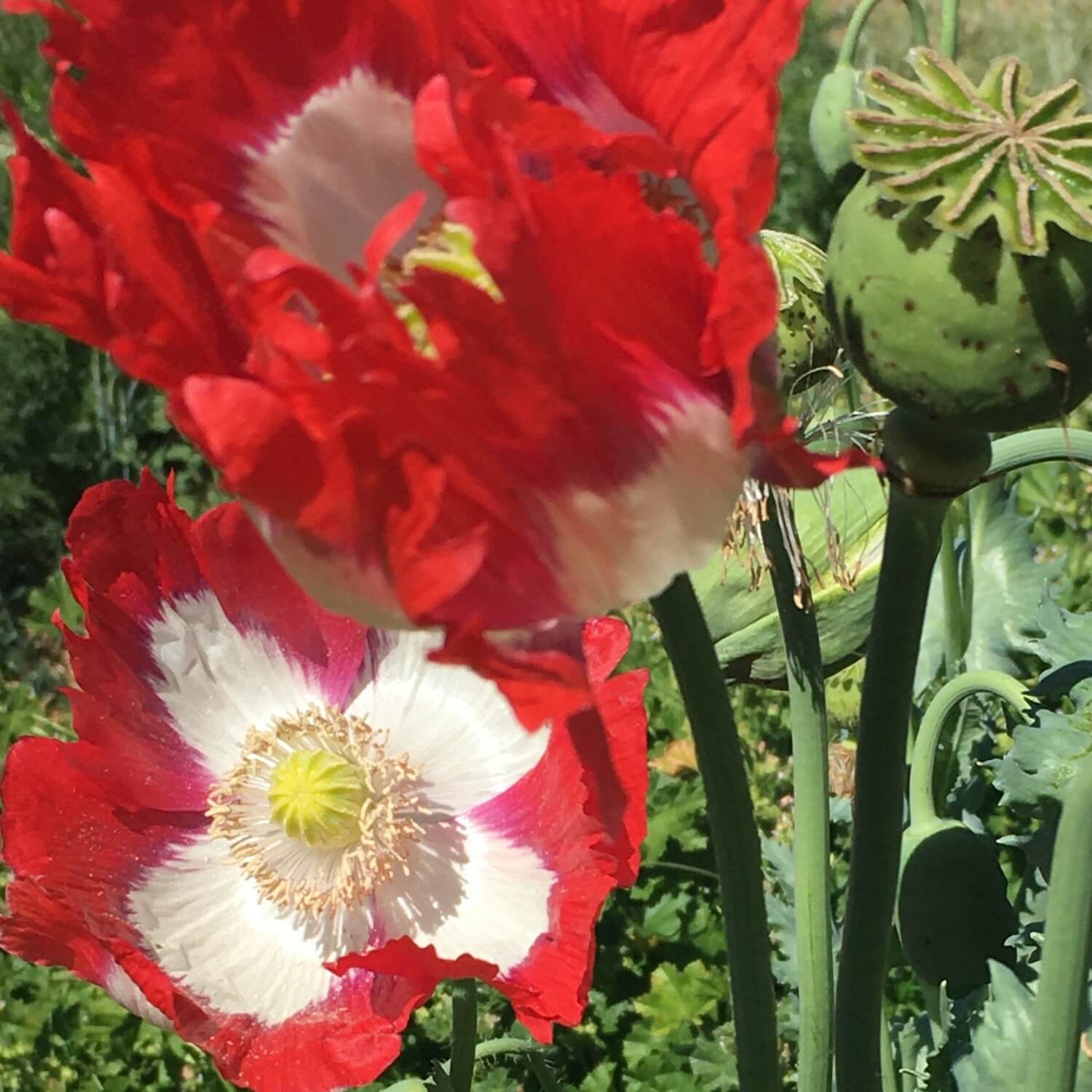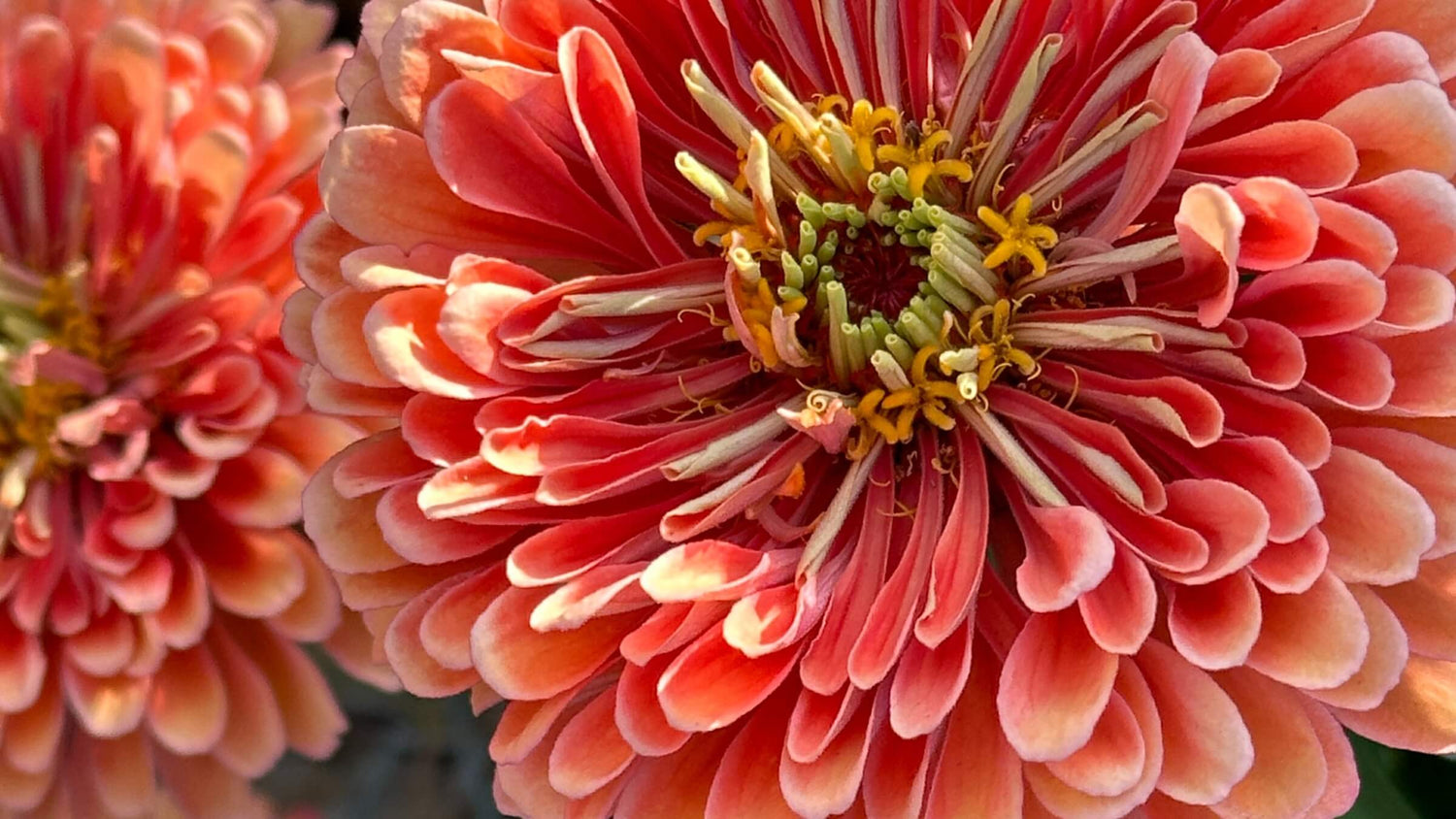
Hopefully by this time of the summer you're rolling in tomatoes wherever you may live! I'd like to use this week's email to share the 'how to' for saving tomato seeds.
Cleaning tomato seeds has always been a favorite of mine. I love the very visceral process and the golden seed is so beautiful. At a seed saving class years ago one student described the seeds as little fluffy ant pillows! Commercially produced seed, by the big seed companies, is mostly washed clean of hairs. But as you can see in the photo above, tomato seed is covered in fine hairs naturally.
If you live in a region of extreme heat, like my hometown of Redding, CA, you may notice your tomatoes slow down in the heat. This is because pollen will die at high temps and the plants won't set fruit. Don't fear, usually the plants will pick up again in Sept and keep producing well into Oct and even Nov in zones 9+.
All tomatoes are classified as Solanum lycopericum and are well known inbreeders, meaning they self pollinate and therefore do not rely on bees or other insects for pollination. Crossing by bees can happen but is infrequent and for the purposes of the home seed saver is not a concern.
On our farm we usually isolate our tomatoes by about 20 ft between different varieties and have not seen cross pollination. For the home seed saver, depending on the size of your garden, you could isolate varieties by 2-10 ft. and still produce mostly true to type seeds.
For a full discussion on isolation and pollination read our Seed Saving Guide.
Step by Step Tomato Seed Saving:
1. Ensure your tomato variety is heirloom and/or open pollinated. If you save seeds from a hybrid variety like Sungold or Celebrity the seeds will not be true to type. That is because the hybrid is already the F1 cross generation and the F2 generation always produces a mix of genetics. Of course if you are a plant breeder then this could be a great place to start the selection process towards a new variety.
2. Choose the best fruits on the best plants to save seeds from. When saving seeds it does no good to only save seeds from the fruits or plants that aren't good enough to eat. If you do this you will reduce the quality of your future generations. This process is called selection for a reason. You want to deliberately select your fruits for the most desirable qualities important to you and your growing conditions.
3. Pick fruits that are at peak ripeness. Underripe fruits may still have viable seeds but it is best for them to be completely ripe. Do not save seeds from fruits that are damaged, moldy or on the ground and covered in dirt. Dirt is very hard to separate from seeds in the final cleaning so it is best to avoid it from the start.
4. Smash fruits up into a rough pulp and leave to ferment. The fermentation removes germination inhibitors from the seed and also kills any disease that may linger. This stage varies in process depending on the scale you are harvesting. On the farm we harvest by the 5 gallon bucket, smash with a flat blade spade and leave to ferment in the shade of a tree.
In the home garden you could select 2-3 fruits, smash with your hands and ferment in a yogurt container on the kitchen counter. Either way you will want to stir the mixture at least once a day.
5. Your seed brew will be ready to clean in 3-4 days. The warmer the temps the faster the fermentation. At this point add water to your vessel and stir. The good seed will naturally fall to the bottom of the container and you will be able to pour off the tomato gunk. This is called Water Winnowing.
If you have a large amount of pulp you may want to pour it through a 1/4 inch wire screen to remove the largest chunks.
Continue adding more water and pouring off the pulp until you are left with mostly clear water and golden seed at the bottom. Seriously, it is a lot like panning for gold!

6. Spread your cleaned seeds on a window screen to dry in a warm shady location with good airflow. For small amounts of seed you can also dry on a ceramic plate or even a paper towel. Be sure seeds are totally dry before storing in a sealed container for next year!

And that's it! For literally a few minutes of work this season you can set yourself up with all the seed you need for next year and extra for your friends or the local seed library.
I hope you give tomato seed saving a go this season. Let me know how it goes for you and if you have any questions!
Kalan






